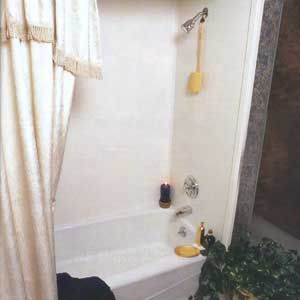
Solid-surface materials have revolutionized both kitchen and bathroom design by increasing durability, stain resistance, and ease of maintenance. While popular for kitchen countertops, these materials are equally effective in bathrooms, particularly for tub surrounds. Here, we guide you through the process of fixing a worn-out tub surround using solid-surface panels, offering both professional and DIY options.
Material Matters
Manufacturers offer vertical-grade solid surfacing that can be applied directly to existing tub and shower walls, providing a cost-effective way to update your bathroom without a full renovation. When selecting materials for your tub surround renovation, these solid-surface panels offer numerous advantages. Available in 1/8- and 1/4-inch-thick sheets, these panels come in various colors and patterns, allowing you to choose a style that complements your bathroom decor. For our project, we used Wilsonart’s SSV (Solid Surface Veneer) in Frosty White, a solid-color option. The kit includes two 30-by-60-inch wall panels and one 60-by-60-inch panel, suitable for a standard 5-foot tub surround.
Solid-surface panels are not only aesthetically pleasing but also practical. Their non-porous nature makes them resistant to mold and mildew, and they’re easy to clean with regular household cleaners. Additionally, minor scratches or nicks can be easily buffed out, maintaining the surround’s appearance over time.
Professional installation by a certified fabricator can cost between $500 and $1,500*, so you can save significantly by purchasing a DIY kit and installing it yourself. These kits include all necessary materials, including trim pieces and adhesives, making them an attractive option for handy homeowners looking to save on installation costs.
*Cost data in this article sourced from contractor estimates used by Angi.
Installing the Panels
Before beginning the installation process, you must properly prepare the existing surface. This preparation ensures a smooth, long-lasting finish for your new tub surround.
1. Clean the Tiles
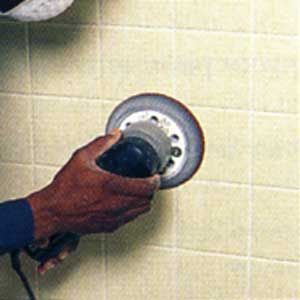
The first step in preparing your tub surround for new panels is thorough cleaning. Remove all soap scum, dirt, and grime from the existing tiles. A random-orbit sander fitted with 80-grit sandpaper is an effective tool for this task. This process not only cleans the surface but also creates a slightly rough texture that helps the adhesive bond more effectively. Make sure you reach all corners and edges where grime tends to accumulate.
2. Make a Cardboard Template
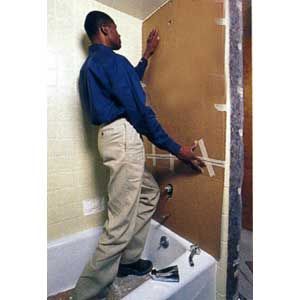
Creating a cardboard template for the plumbing-end wall will ensure a perfect fit for your new panels. This template will help you accurately locate and cut holes for the showerhead, tub spout, and faucet handles. Measure and mark these locations carefully on your cardboard template, then cut out the holes and test-fit the template to ensure accuracy.
3. Apply Silicone Adhesive
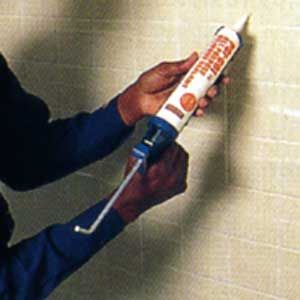
Apply continuous beads of silicone adhesive to the entire wall in a grid pattern, spacing the beads about 6 inches apart. Pay special attention to the top and bottom of the wall, applying a double bead for extra holding power. Use a plastic trowel with 1/8-inch-wide notches to spread the silicone evenly across the wall surface. This ensures that the panel adheres uniformly, reducing the risk of gaps or air pockets that might weaken the bond.
4. Press Panel to the Wall
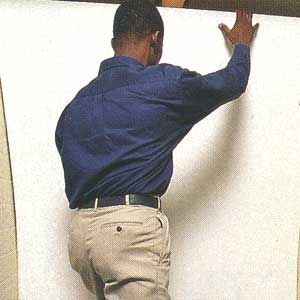
Once the adhesive is applied, it’s time to install the panels. Start with the large panel on the back wall of the tub. Place 1/16-inch-thick shims under the panel to hold it slightly above the top of the tub, allowing for expansion. Press the panel firmly against the wall and use a J-roller to ensure full contact with the adhesive. Press consistently to prevent any warping or misalignment of the panel.
5. Drill Pilot Holes
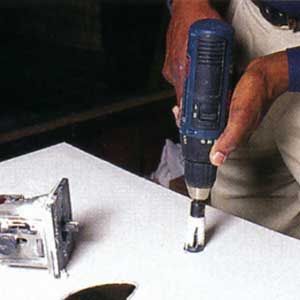
For the plumbing-end panel, use your cardboard template to mark the locations of the necessary holes. Drill these holes using an appropriate-sized hole saw. For larger openings, such as those for the tub spout, a router with a straight bit can provide more precise cuts. Take care to make clean, accurate cuts to ensure a professional-looking finish.
6. Test-Fit the End Panel
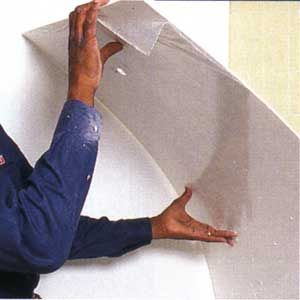
Before applying adhesive, test-fit the end panel to ensure all holes align correctly with the plumbing fixtures. Once you’re satisfied with the fit, apply silicone adhesive to the wall as before and carefully press the panel into place. Use the J-roller again to ensure full contact. Repeat this process for the opposite end panel if necessary. Ensuring proper fit before finalizing the adhesive application can prevent costly mistakes and ensure a seamless look.
7. Apply Molding
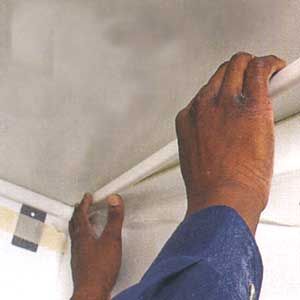
The final touch in your tub surround installation is applying the decorative molding. This step provides a finished look and helps seal the edges of the panels. Apply silicone adhesive to the back of the molding and press it firmly against the wall. Use masking tape to hold the molding in place while the adhesive sets. Install both horizontal and vertical corner trim pieces for a complete, polished appearance. This additional step adds a layer of protection and enhances the overall aesthetic of the tub surround.
8. Install Corner Trim
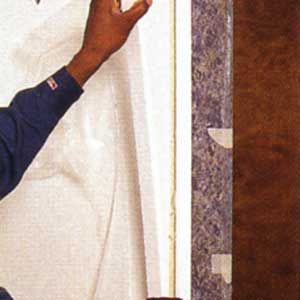
In some cases, the existing ceramic tile may extend beyond the new end panels. To address this, create custom corner trim using two flat pieces of molding joined at a 90-degree angle. Glue these pieces to the exposed tile using silicone adhesive. This step ensures a seamless transition between your new surround and the existing bathroom walls. Proper corner trimming aligns the design, making the entire installation look cohesive and professional.
Finishing Up
After installing all panels and trim pieces, allow the silicone adhesive to dry for at least 24 hours before removing any tape or using the tub. This drying time helps ensure a secure bond and prevents any shifting or separation of the panels. Once the adhesive has fully cured, you can reinstall your showerhead, tub spout, and faucet handles. Be sure to use appropriate sealants around these fixtures to prevent water infiltration behind the new surround. Carefully check for any gaps or weak spots after curing to ensure the installation remains water-resistant.
Maintenance and Care
To keep your new solid-surface tub surround looking its best, regular cleaning with mild soap and water is usually sufficient. Avoid using abrasive cleaners or scrubbers, as these can dull the surface over time. For tougher stains, a non-abrasive cleaner specifically designed for solid-surface materials can be used.
One of the advantages of solid-surface materials is their ability to be refinished. If your surround develops minor scratches or stains over time, light sanding with fine-grit sandpaper can often restore the surface to its original appearance. This refinishing capability provides long-term value, ensuring that your investment retains its appeal.
